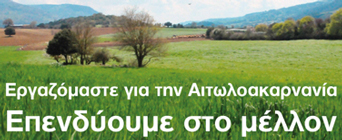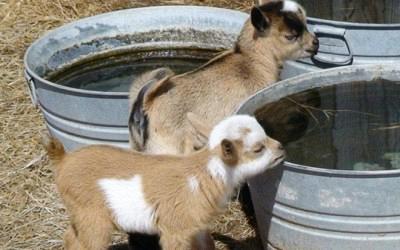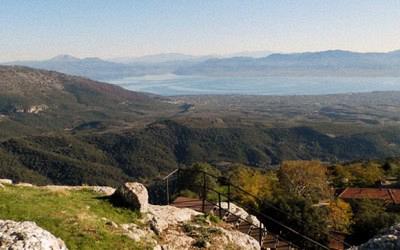Economy
A. In general
The prefecture’s income mainly derives from stockbreeding, with the southern regions being predominant in the sector.
b. Tobacco Producers
Since 1833 and until 2005, tobacco farming was one of the greatest and most profitable crops in Aetoloakarnania with great economic, agricultural, social, financial, regional and cross-sectoral importance. By 2005, tobacco was the third domestic agricultural product in annuity after the olive oil and cotton, while the 11,000 tobacco farmers of the prefecture delivered nearly 30% of the country’s total production.
The Common Agricultural Policy (CAP) of the EU in 2006, with the single payment entitlement and the complete disconnection from the production resulted in the complete and abrupt abandonment of tobacco farming. It is no coincidence that despite the rich natural environment and vast opportunities for investment and development, the prefecture today is considered to be one of the poorest in terms of income.
Among the measures adopted to minimize the effects on the tobacco farmers, was mainly the support of stockbreeding through investment programs and, recently, the investment in renewable energy sources.
The Union of Agrinio, upon its decision, took the initiative to fund pilot projects in order to enhance the development of new dynamic crops like plums, pears, etc., actually contributing to the restoring of the lost income for the tobacco farmers.
c. Other Crops – Livestock keeping
After 2005, when the massive tobacco crops in the prefecture were abandoned, there was an increase of the areas whose products can be used for animal feedstuff. About half of the farmlands in the prefecture is now used for grain, fodder and maize production. Regarding the area covered, olive trees remain the most popular cultivation in the prefecture and it is in fact notable that there is an increase in new plantings, mainly of the Kalamata variety.
The crops of asparagus remain strong in the prefecture, mainly because of the professionalism shown by the "ACHELOOS" Agricultural Cooperative of Asparagus and Other Vegetables Producers of Aetoloakarnania prefecture, whose members are growing over three thousand acres of white and green asparagus since 1998.
In recent years, in cooperation with the Union of Agrinio, the “ACHELOOS” members invested in plum and kiwi crops, having already planted over a thousand acres of each fruit.
The above mentioned Cooperative bears in its capacity two of the most modern certified packaging plants and conducts exports, which exceed the amount of five thousand tons per year. In the southwest coast of the region, there are fish farms, where fish are bred producing their famous and delicious roe, whereas some of the fishes are destined for fresh or canned consumption. Sedges and sea breams or eels are of dominant presence and one can find as well large salt-flats, especially in the Messolonghi area.
In the livestock keeping sector, the prefecture is the top in goat & sheep farming which, based on data of 2010, numbers about 1,000,000 animals. It is notable that, especially in mountainous areas of the prefecture, the animals are reared mostly in the traditional way of free grazing.
The prefecture also holds one of the highest positions in the domestic pork production, having modern facilities in Agrinio, Vonitsa and Astakos area.
Free cattle grazing is developed in the mountains of Nafpaktos, Valto, Xiromero and, recently, in the Akarnanian Mountains.
Organic farming in Aetoloakarnania and the prefecture’s participation in the relevant domestic activity
| Greece | Aetolokarnania | Percentage (%) | |
| Breeders | 2.441 | 853 | 34,9 |
| Goats | 290.191 | 61.255 | 21,1 |
| Cattle | 16.280 | 4.959 | 30,5 |
| Sheep | 271.544 | 81.653 | 30,1 |
| Pigs | 43.390 | 9.437 | 21,7 |
| Total | 621.405 | 157.304 | 25,3 |
Finally, it should be noted that Aetoloakarnania is at the moment the first prefecture in the field of organic agriculture and organic farming throughout the country.
As it is shown in the tables below, Aetokoakarnania has the majority of farmlands using organic methods and the prefecture holds the 1/3rd of the country's farmers applying organic farming.
Acres per prefecture that the organic cultivation method is applied.
| Prefecture | Decares | Prefecture | Decares | Prefecture | Decares |
| Aetoloakarnania | 135.480,9 | Corinthia | 28.155,0 | Xanthi | 7.097,4 |
| Lesvos | 128.130,5 | Rethymnon | 22.860,9 | Lasithi | 6.544,1 |
| Larisa | 116.751,4 | Achaia | 17.026,1 | Hmathia | 6.319,3 |
| Chalcidice | 109.561,6 | Trikala | 16.760,8 | Rodopi | 6.316,8 |
| Evros | 107.148,3 | Karditsa | 16.265,3 | Kefalonia | 5.255,3 |
| Kilkis | 90.031,4 | Ilia | 16.140,6 | Thesprotia | 5.151,6 |
| Laconia | 89.127,6 | Boeotia | 13.951,9 | Kastoria | 5.061,1 |
| Thessaloniki | 85.805,7 | Arcadia | 13.178,4 | Samos | 4.267,2 |
| Magnesia | 75.795,5 | Chania | 11.166,5 | Zante | 2.525,0 |
| Grevena | 54.801,1 | Attica | 10.948,9 | Lefkada | 2.297,5 |
| Fthiotida | 44.302,8 | Preveza | 10.810,8 | Pieria | 1.651,8 |
| Messinia | 37.139,2 | Astride | 10.016,4 | Cyclades | 1.092,3 |
| Serres | 35.001,4 | Euboea | 8.375,4 | Chios | 1.049,1 |
| Kozani | 34.994,0 | Florina | 8.017,4 | Phokis | 834,9 |
| Heraklion | 32.456,7 | Ioannina | 7.615,1 | Dodecanese | 740,7 |
| Drama | 31.221,6 | Arta | 7.257,3 | Corfu | 703,1 |
| Argolis | 29.895,8 | Pella | 7.202,6 | Evritania | 229,7 |
Agricultural Activity: Agriculture
Region’s Agriculture Crops of year 2010
| Crops | Plots | Acres |
| Olives | 67.575,00 | 333.951,60 |
| Cereals | 22.244,00 | 176.043,90 |
| Hay | 17.849,00 | 169.618,40 |
| Maize | 7.115,00 | 75.632,20 |
| Cotton | 1.246,00 | 23.979,80 |
| Citrus trees | 1.987,00 | 11.445,00 |
| Rice | 498 | 11.084,60 |
| Nuts | 652 | 6.512,40 |
| Outdoor Gardening | 772 | 5.492,80 |
| Low Coverage & Long Term Vegetables | 419 | 5.276,60 |
| Legumes | 419 | 4.549,80 |
| Fruit Trees | 485 | 3.877,00 |
| Grapes | 977 | 2.721,90 |
| Oil Seeds | 44 | 1.170,20 |
| Tobacco | 164 | 1.052,40 |
| Greenhouse Vegetables | 77 | 343,5 |
| Herbs | 43 | 337,4 |





